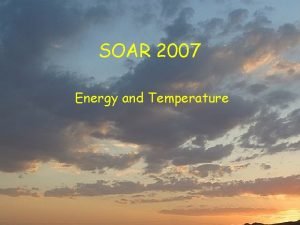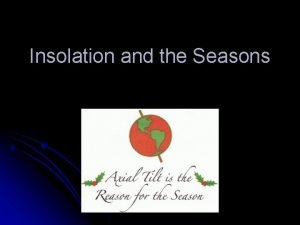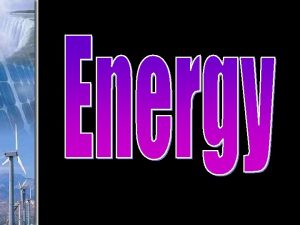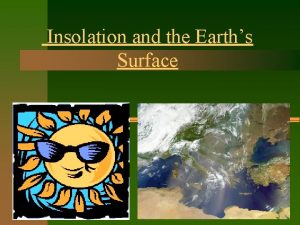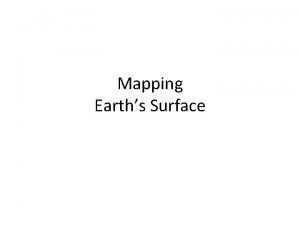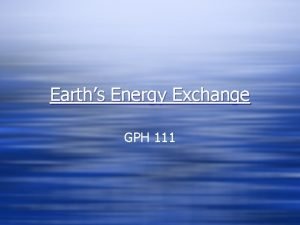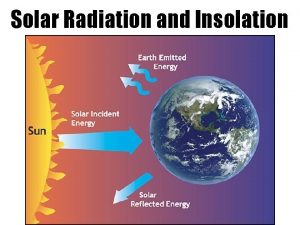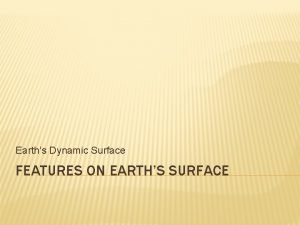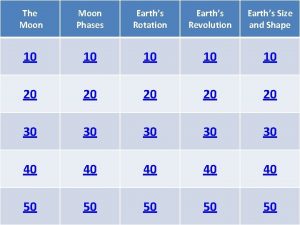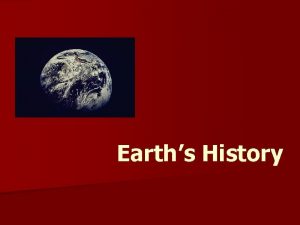Topic 6 Insolation and the Earths Surface Insolation













- Slides: 13

Topic 6: Insolation and the Earth’s Surface

Insolation- The portion of the Sun’s radiation that reaches the Earth INcoming SOLar Radi. ATION Angle of insolation (incidence)Angle at which insolation strikes the Earth’s surface The intensity of insolation (how strong) increases as the angle of Sun approaches 90 o Where the Sun’s rays are vertical (90 o), the maximum amount of solar energy is received

As angle of insolation increases the intensity of the sunlight increases

Angle of insolation varies with: Seasons - Maximum insolation for New York occurs on June 21.

Absorption of insolation varies due to: 1. Water - better reflector Land - better absorber and radiator 2. Water - higher specific heat than land (needs more energy to raise it’s temperature) 3. Water - highly transparent: insolation is absorbed at a greater depth.

Absorption of insolation (cont): 4. Convection can occur in water distributing the energy 5. Ice and snow reflect almost all insolation 6. Melting of snow and evaporation of water transform insolation into potential energy (keeps temperatures lower) 7. Energy used for Transpiration – process by which plants release H 2 O vapor into atmosphere

EARTH’S SHAPE- The sun’s energy reaches the Earth’s surface as parallel rays. The Earth nearly spherical causing insolation to be spread out over larger area of Earth’s surface

TIME OF DAY- maximum insolation at solar noon (sun is at it’s highest point - usually around 12: 00 p. m. )

LATITUDE- As degree latitude increases insolation decreases The lower the latitude the higher the angle 90 o. N 23. 5 o. N 0 o 23. 5 o. S 90 o. S

Duration of insolation – how many hours of daylight - Affected by Latitude and Season Maximum duration in NY (15 hours) on summer solstice. Average duration (12 hours) on equinoxes. Least duration in NY (9 hours) on winter solstice.

THE ATMOSPHERE: Insolation may enter the atmosphere but not all of it reaches the Earth’s surface

The atmosphere effects insolation because: 1. Stratosphere ozone (O 3) absorbs most UV radiation 2. Infrared radiation is absorbed by H 2 O vapor and CO 2 3. Visible light passes through atmosphere. 4. Clouds reflect 20 - 100% insolation. 5. Aerosols- particles in the atmosphere causing scattering of insolation, reducing the amount of insolation reaching the surface. ex: water droplets, dust, ice crystals, pollen, soot, and other pollutants.

What happens to the insolation?

